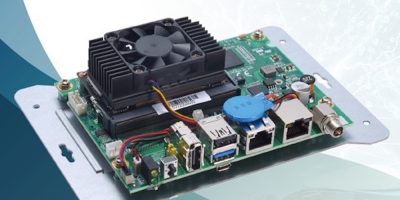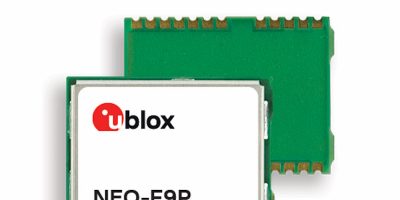The AIE110-XNX is the latest edge AI developer kit from Axiomtek. It is powered by the Nvidia Jetson Xavier NX which features six core Nvidia Carmel Arm v8.2 64-bit CPU delivering up to 21 Tera operations per second (TOPS) of accelerated AI computing performance. It integrates an advanced 384-core Nvidia Volta GPU with 48 Tensor cores. Aimed to save effort on system integration and reduce complexity for embedded developers, the AIE110-XNX enables users to develop AI solutions on a friendly budget with no limit of minimum order. The palm-sized edge AI developer kit is ideal for makers, learners, and system integrators to build more AI innovation with little effort.
The AIE110-XNX can be quickly engaged to be the AIE100-903-FL-NX for smart city, the IP67-rated AIE800-904-FL for outdoor edge AI applications, the AIE900-XNX for robotics and AMR or self-service kiosk applications, advised Axiomtek. It can also be upgraded with AI performance such as Nvidia Jetson Orin NX, Nvidia Jetson Orin Nano. The AIE110-XNX has reserved mounting holes on the bracket, which helps system integrators to start development.
The edge AI developer kit AIE110-XNX has a rugged design for harsh environments, allowing it to operate under a wide temperature range from -10 to +60 degrees C and vibration of up to 3Grms. It has 8Gbyte of LPDDR4x memory and 16Gbyte eMMC onboard. One M.2 Key M 2280 SSD slot with a high-speed PCIe x4 NVMe interface and one Micro SD slot are available for extensive storage needs. One 15W GbE PoE port is available for both power and video transmission to easily deploy an IP camera. It also supports one PCI Express Mini Card slot for Wi-Fi, Bluetooth, LTE, and GPS.
The AIE110-XNX supports the Nvidia JetPack, which provides a full development environment for end-to-end accelerated development on Nvidia Jetson modules, to foster the development of AI-assisted operations across industries.
The AIE110-XNX supports device monitoring and management services by Allxon, bringing comprehensive remote management onto edge AI devices. Axiomtek’s edge AI developer kit AIE110-XNX is available now.






